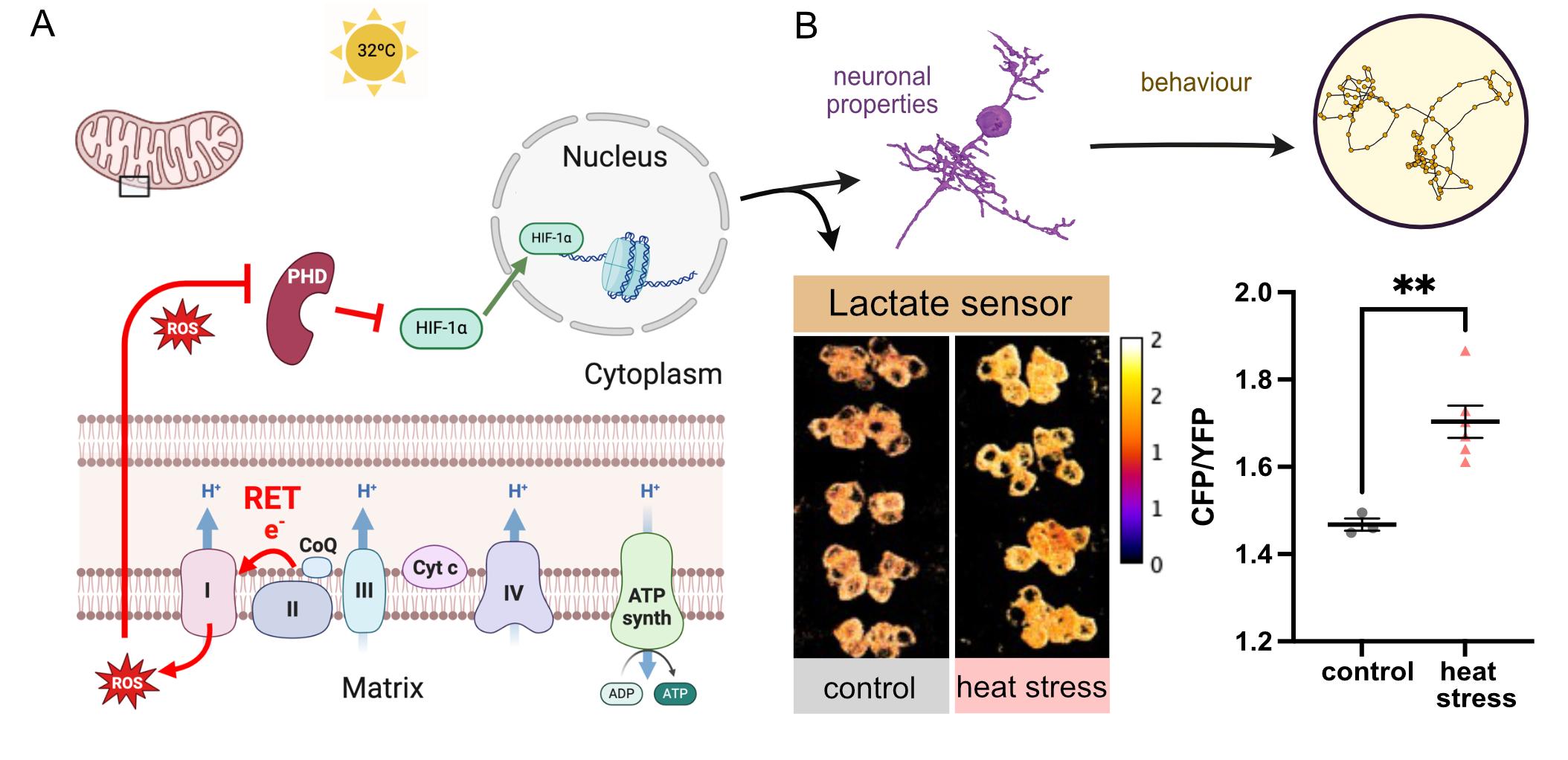
Heat stress vulnerability in insects during critical periods of development – understanding mechanisms to find solutions
Supervisor: Professor Matthias Landgraf
Insect populations have been in precipitous decline. One contributing factor might be climate change-associated heat stress. We discovered that transient heat stress, when experienced during a critical period of development, is sufficient to permanently impact on nervous system stability and function, changing animal behaviour. We have identified the primary signals, emanating from mitochondria; and we have first glimpses of the mechanism that converts a transient heat stress challenge into a lasting debilitating outcome: metabolic reprogramming, well known for cancers. The aim of this project is to build on these foundations to investigate how animals adapt to long-term heat stress. Studying related, heat- vs cold-loving species, might offer solutions that have evolved, in stress responses and adaptability.
Type of work
You will undertake state-of-the-art imaging using genetically encoded sensors for metabolites. Transcriptomic and metabolomic methods will be used to determine underlying mechanisms.
Importance of the area of research concerned
Climate change is an additional challenge to already declining insect populations. Having identified molecular mechanisms that can lead to maladaptive outcomes following critical period stress, we now need to seek potential solutions, inspired by nature and evolution.
References
Sobrido-Cameán D, Coulson B, Miller M, Oswald MCW, Pettini T, Bailey DMD, Baines RA, Landgraf M. Mitochondrial ROS and HIF-1α signaling mediate synaptic plasticity in the critical period.
PLoS Biol. 2025 Aug 13;23(8):e3003338. doi: 10.1371/journal.pbio.3003338. Epub ahead of print. PMID: 40802851. Krick N, Davies J, Coulson B, Sobrido-Cameán D, Miller M, Oswald MCW, Zarin AA, Baines RA, Landgraf M. (2024).
Heterogeneous responses to embryonic critical period perturbations within the Drosophila larval locomotor circuit. bioRxiv 2024.09.14.613036; doi: https://doi.org/10.1101/2024.09.14.613036 Hunter I, Coulson B, Pettini T, Davies JJ, Parkin J, Landgraf M, Baines RA. (2024).
Balance of activity during a critical period tunes a developing network. eLife. 12:RP91599. doi: 10.7554/eLife.91599.
